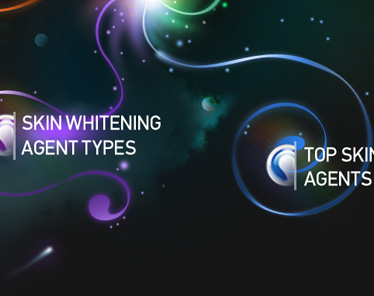










INTRODUCTION
Skin whitening, skin lightening and skin bleaching is the process of using natural and chemical substances in the form of soaps, pills, creams, etc. in order to lighten skin color or provide an even toned complexion.
Motives behind the use of skin lightening products vary considerably between cultures.
In many cultures skin whitening is pursued for aesthetic and cultural reasons. White skin is associated with beauty aristocracy and wealth in some countries, so whiter skin can project those qualities.
Abnormalities in pigmentation pose not only an aesthetic problem but also a dermatological issue and frequently produce considerable distress in the patient. Skin pigmentation disorders occur because the body produces either too much or too little melanin, a pigment that creates hair, skin, and eye color. Disorders causing excess melanin are known as hyperpigmentary or hypermelanotic diseases. Disorders causing reduction in melanin or loss of melanin are known as hypopigmentary or hypomelanotic.
Several treatment options have been investigated for their effectiveness in treating skin hyperpigmentary and hypopigmentary disorders. Treatment options include the use of topical agents, chemical peels, cryotherapy, laser therapy and surgical excision.
HISTORY
Skin lightening or skin bleaching, as it is known in some cultures, has existed for thousands of years.
The desire for pale skin has roots that run deep in India's history. It's entwined with Hinduism's complex social hierarchy, or caste system. In India, white skin is considered as a mark of class and caste as well as an asset. A white complexion was seen as noble and aristocratic. Those higher up the scale generally tend to have paler skins because the rich and educated could afford to stay indoors, while the poor and uneducated were forced to work outdoors.
In Asia, women were deeply influenced by the concept that a white complexion is powerful enough to hide a number of faults. In ancient China and Japan the saying "one white covers up three ugliness" was passed through the generations. Asian countries have long histories of utilizing white skin as a key criterion of personal beauty. In China, “milk-white” skin is a symbol of beauty. In Korea, flawless skin like white jade and an absence of freckles and scars have been preferred since the first dynasty in Korean history.
Ancient cultures used botanicals and mineral compositions of various kinds to facilitate skin lightening. Several of these materials, researched in recent years, have been found to contain natural enzyme/hormone inhibitors, antioxidants and sunscreens. Chinese were known to ground pearl from seashells into powder and swallow it to whiten their skin, while across the Yellow Sea, applying white powder to the face has been considered a woman’s moral duty since the Edo period. In Korea various methods of lightening the skin have long been used such as applying miansoo lotion and dregs of honey. Historically, women in South India bathed with turmeric which is now known for its skin lightening and anti-inflammatory properties.
CULTURE
In modern culture, not only does skin lightness affect perceptions of a woman’s beauty, it also affects her marital prospects, job prospects, social status, and earning potential.
Fueled by increasing wealth and growing consumer cultures, skin whitening and lightening products have recorded dramatic growth worldwide during the past few decades. The skin-lightening industry is estimated to be worth at least £100m in India and some analysts are estimating it could be worth billions of dollars worldwide.
Mass media and the fashion industry also play important roles in reinforcing the yearning for white skin.
A survey by Asia Market Intelligence revealed that three out of four Malaysian men thought their partners would be more attractive with lighter skin. In Hong Kong two out of three men prefer fairer skin, while half the local women wanted their men paler. Almost half of Asians aged 25 to 34 years used skin whiteners.